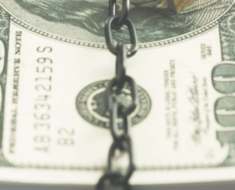Fortune Magazine is reporting that the Federal Reserve is continuing its practice of injecting money into the “repo” markets that the banks use to lend each other on an overnight basis. The Fed began injecting money into the banking system last Tuesday and has continued the practice into this week because the banks lending rate on the repo market was averaging around 5.25 percent.
This signaled that banks were not trusting each other to be able to pay back their overnight loans. It also signaled that there was a lack of liquidity in the system. This same lack of liquidity and the Fed’s parallel response in 2008 to inject money into the repo markets occurred a decade ago at the beginning of the Great Recession.
According to Fortune, the reason that there was such little liquidity in the system was because businesses were applying en mass for loans to cover their corporate taxes. Fortune also cited the fact that the Fed ended quantitative easing five years ago as another reason that the system was lacking liquidity.
Business Insider is reporting that the Fed’s injection of money into the repo market has been $75 billion nightly but that the latter made a $105 billion injection into the repo market on Monday. The Fed has released a note stating that these injections of liquidity into the repo market will continue into early October. They are also stating that they will offer $30 billion in 14-day loans into the system as warranted.
All of this activity comes only a week after the Fed cut their benchmark interest rate by another quarter percentage point.
When the banks are having difficulty making these short-term loans to each other, credit tightens.
This is the same type of liquidity crisis that happened during the Great Recession. The banks began tightening their lending to typical debt consumers, such as small businesses and home buyers. Many small businesses had to shutter their doors and others had to revert to riskier and more expensive debt, such as credit card debt, in the wake of the credit tightening during the Great Recession.
Many consumers who were forced to rely upon home equity lines of credit during the recession lost their homes. HELOCs are less common today, so homeowners and other consumers have also been forced to rely upon far more expensive credit card debt.
The average credit card rate for consumer credit cards as of this month is almost 18 percent, with business credit cards in the mid-double digits as well. During the height of the Great Recession, the interest rates for consumer credit cards averaged a still high 13 percent.
Dil Bole Oberoi





